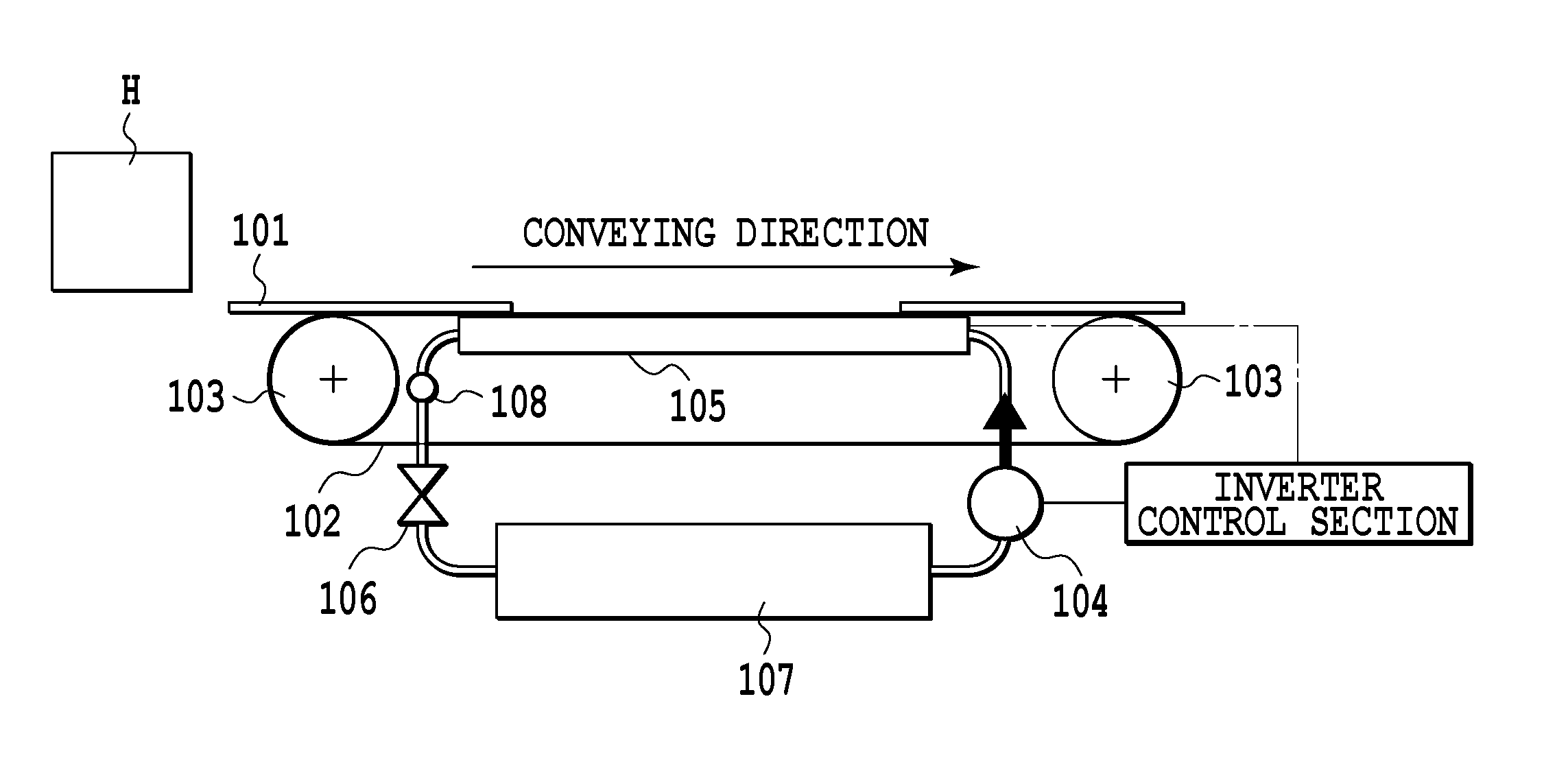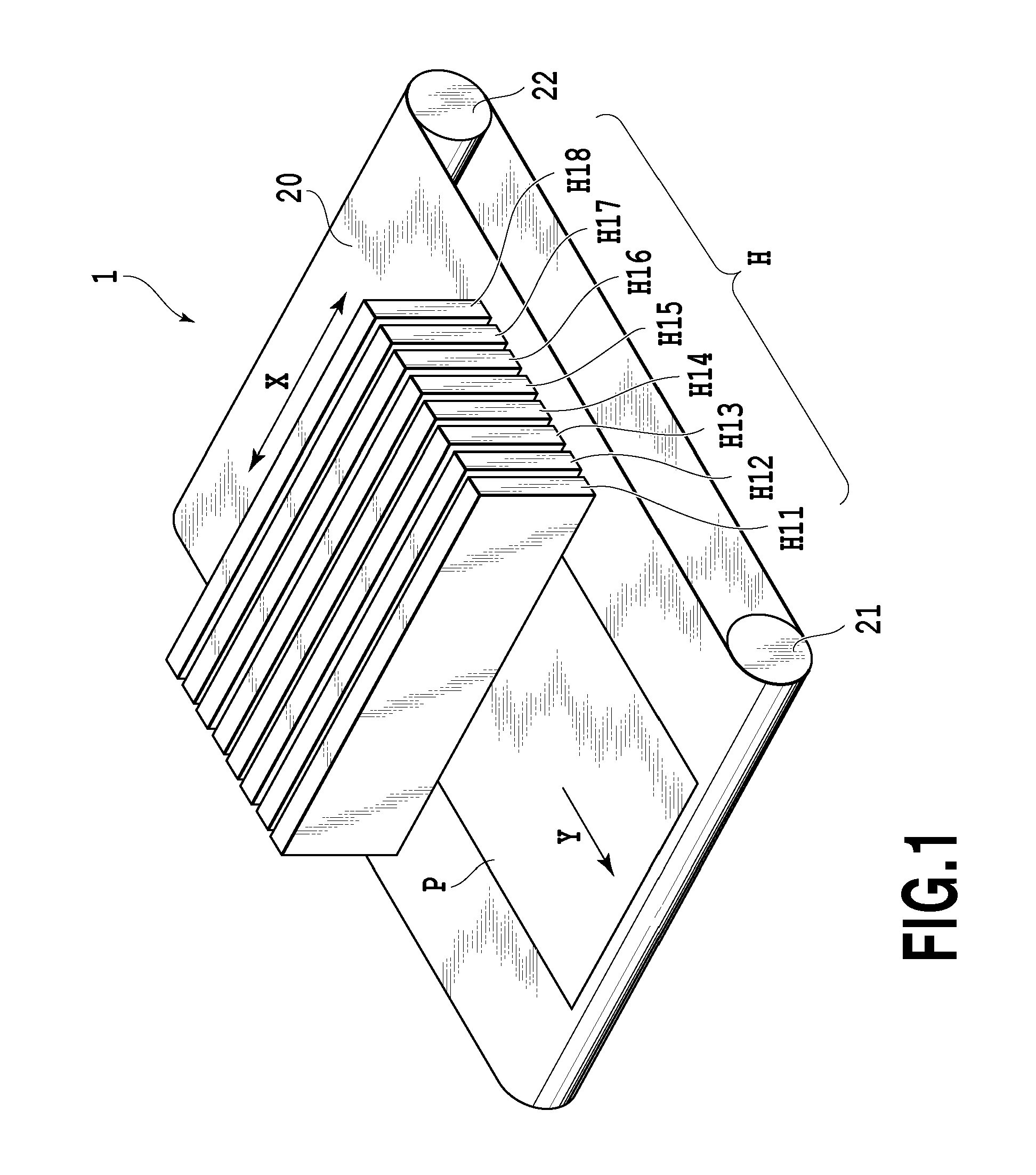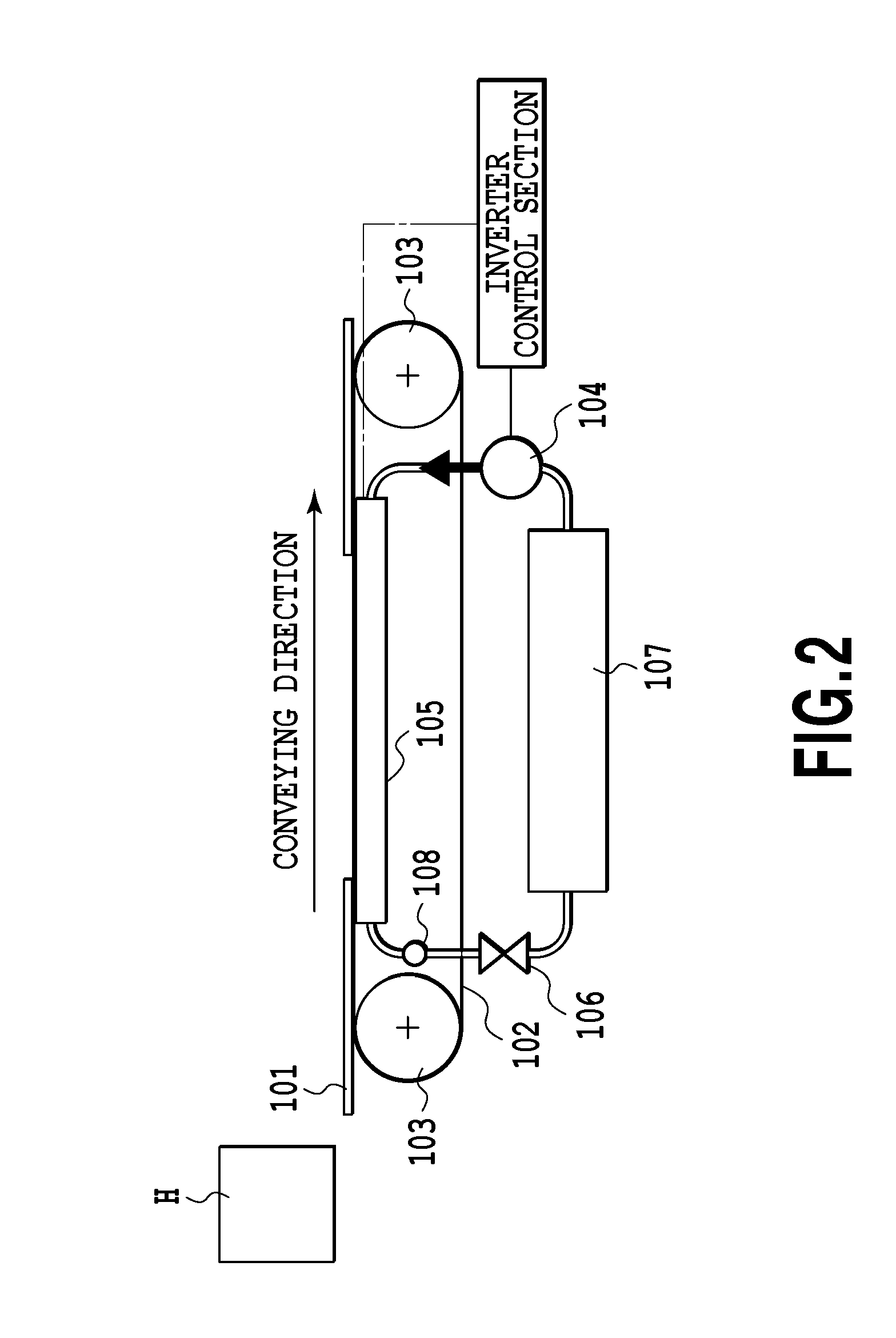Printing apparatus
a technology of printing apparatus and printing medium, which is applied in the direction of printing presses, instruments, printing, etc., can solve the problems of inefficient conversion of current, degraded quality of printed matter, and inability to dry the print medium in sufficient time, so as to achieve the effect of less power consumption
- Summary
- Abstract
- Description
- Claims
- Application Information
AI Technical Summary
Benefits of technology
Problems solved by technology
Method used
Image
Examples
first embodiment
(First Embodiment)
[0028]FIG. 1 is a perspective view schematically showing an example of a full-line ink jet printing apparatus applied to an embodiment of the present invention. An ink jet printing apparatus 1 includes a plurality of elongate print heads H11 to H18, each with a plurality of ejection portions (hereinafter referred to as nozzles) arranged in array configured to eject ink; the print heads H11 to H18 correspond to plural types of inks in the respective colors. Furthermore, an endless conveying belt 20 serving as a conveying section for conveying a print medium P is provided in a direction crossing an x direction that is a longitudinal direction of the print heads (direction along which the ejection port array is extended). The conveying belt 20 is passed around two rollers 21 and 22. When one of the rollers is continuously rotated by a driving motor (not shown in the drawings), the conveying belt 20 moves cyclically to continuously convey the print medium in a Y direct...
second embodiment
(Second Embodiment)
[0055]Now, a second embodiment of the present invention will be described. In the figures, components of the second embodiment which are configured as is the case with the first embodiment are denoted by the same reference numerals. The description of these components is omitted, and only different components will be described.
[0056]FIG. 10 is a cross-sectional view schematically showing the configuration of heating and drying unit for heating a print medium 101 printed with ink by print heads in the second embodiment. A heat-pump mechanism according to the second embodiment is different from that according to the first embodiment in that the former heat pump includes two separate condensers 105a and 105b. In the second embodiment, the condenser 105 is separated into the condenser 105a on the refrigerant-outlet side thereof, where a refrigerant changed into wet steam flows out from the condenser, and the condenser 105b on the refrigerant-inlet side thereof, where ...
PUM
 Login to View More
Login to View More Abstract
Description
Claims
Application Information
 Login to View More
Login to View More - R&D
- Intellectual Property
- Life Sciences
- Materials
- Tech Scout
- Unparalleled Data Quality
- Higher Quality Content
- 60% Fewer Hallucinations
Browse by: Latest US Patents, China's latest patents, Technical Efficacy Thesaurus, Application Domain, Technology Topic, Popular Technical Reports.
© 2025 PatSnap. All rights reserved.Legal|Privacy policy|Modern Slavery Act Transparency Statement|Sitemap|About US| Contact US: help@patsnap.com



